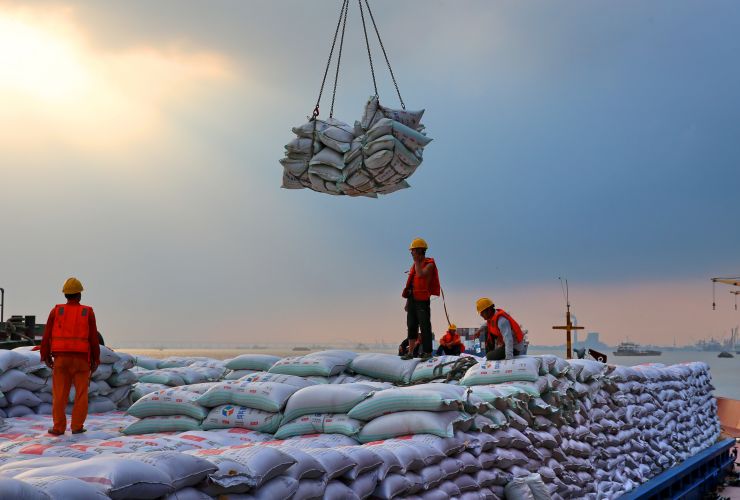
China’s soybean imports in the opening weeks of 2019 have plunged from recent years, raising concerns for American farmers who were hoping that a trade deal would offer swift relief.
Soybean shipments offloaded in China this year are down about 37 percent from the first two weeks of 2018, according to tanker-tracking firm ClipperData. To be sure, a couple weeks of data represent a small sample size, but the drop is very concerning in light of market conditions and trade tensions, says Ken Smithmier, director of research for agricultural markets at ClipperData.
The ongoing U.S.-China trade dispute is now being complicated by an outbreak of African swine flu that threatens to suppress Chinese demand for soy meal, a common hog feed, for months to come. Along with soft auto sales and dismal manufacturing data, China’s remarkably weak soybean imports add more evidence of a slowdown in the world’s second-largest economy.
China, the world’s top soybean consumer, has turned to Brazil and other exporters for its supplies since slapping tariffs on U.S.-origin soybeans. The trade tension has weighed on prices, with soybeans losing more than $2.50 per bushel — roughly a quarter of their value — between the 2017 peak in March and the trough in September.
As Beijing and Washington endeavor to end the dispute, prices have rallied about 80 cents. That essentially signals to farmers that they shouldn’t cede too much acreage to other crops at the expense of soybeans, says Smithmier. However, he believes that’s a false signal and prices will soon correct.
“There has been talk that China has bought up to 5 million tonnes of US soybeans in the last month as trade negotiations take place,” he wrote in a blog post. “This has a nice ring to it, but in our view, these are goodwill purchases for Chinese state-owned storage and nothing more. These trades in no way portray real demand within the country.”
The faltering imports are a major red flag for demand. Meanwhile, the world’s top three soybean suppliers — the United States, Brazil and Argentina — have all produced sizable crops.
“We’re already dealing with record-high global soybean stocks,” Smithmier says.
“The last thing you need to add to the difficulty of the trade war is a true demand problem in China, one that is caused by lower demand from feed, not just trade war rhetoric. You have an absolute issue there.”
China has culled more than 900,000 pigs following the swine flu outbreak in August, the Ministry of Agriculture and Rural Affairs announced this week. Smithmier forecasts weaker pork consumption — and therefore soy meal demand — will persist through the first quarter and possibly into the second quarter.
The near-term concern is that faltering demand in China trickles down and hurts markets in Southeast Asia, says Smithmier. Last year, American farmers weathered trade disruptions by shipping soybeans to other nations, but shrinking demand on a global level would upend that dynamic.
“You’re going to see some really stiff competition in the global soybean market, and I think that’s a factor that could push prices much lower than where they are today,” Smithmier said.
